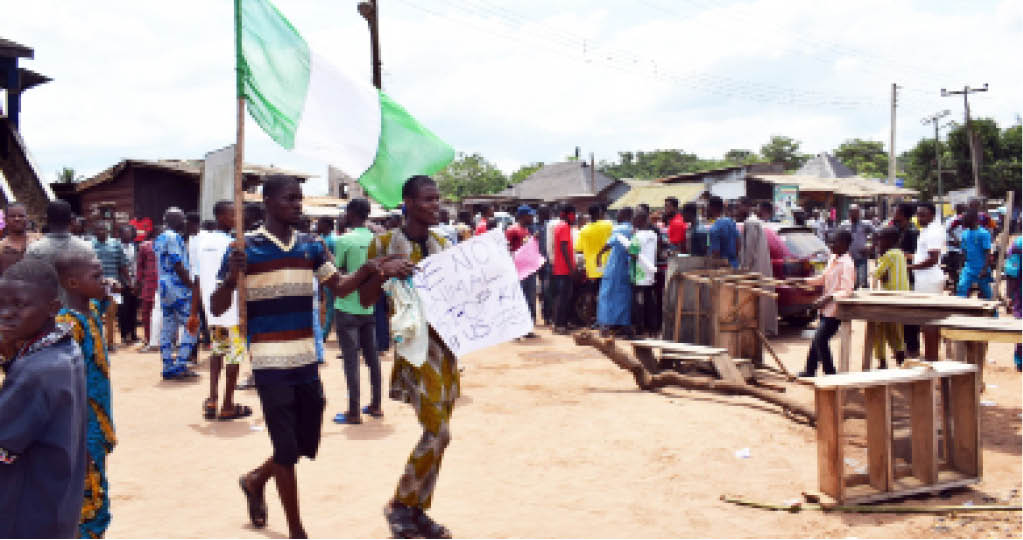It was Winston Churchill who once said “Never let a good crisis go to waste”. Over the past 2 weeks the country was suddenly gripped with #EndSARs protests which saw a spontaneous eruption of protests by tens of thousands of youth take to the streets in a number of cities to protest Police brutality, from Lagos to Port Harcourt, Enugu, Edo, Abuja and many others.
Aided by Social media, notably through the #EndSARS campaign on twitter which topped global trends over the past 2 weeks, the protesters were able to organize for peaceful protests, mobilize logistics and supplies including food, medical assistance and in some cases private security.
Over the years, Nigeria’s population has steadily increased, from about 42 million at independence in 1960 to about 200 million today, and this is projected to increase to about 400 million by 2040. With this increase in population also comes an increase in poverty levels, unless if GDP growth rate outperforms population growth rate. Nigeria has the second highest number of people living in extreme poverty, according to the World Bank.
Perhaps one takeaway from the current crises is that the initial protest, which was largely peaceful and organized, was about police brutality, which was acknowledged by the government as a genuine concern and subsequently led to the disbandment of the notorious SARS unit. The second part of the protests which was uncoordinated, and later turned out to be violent, with destruction of properties, government buildings and massive looting was a combination of poverty, anger, as well as a resent against the ruling class and the elites, which takes us back to the question of Gini Coefficient.
We drive flashy cars and pass by these youths on the streets, we live in Palatial mansions while they sleep in ghettos, we fly out to London and Dubai for shopping, while they can’t even afford basic groceries in shopping malls, we jet out for even the most minor medical treatment while they die of common and preventable illnesses, we send our children to elite schools abroad while they roams the streets, we get plum jobs for our children in NNPC, CBN, etc. while they scavenge for survival.
The large population of youth is both our strength and our weakness. The earlier we rethink and provide Jobs, opportunities, education and basic healthcare for all not few, the better.
The president in his broadcast commiserated with the loss of lives and affirmed the constitutional right of the youths to peaceful protests. He also assured justice for the victims of police brutality and reiterated government’s commitment to police reforms. The protests have once again brought police reforms to the front burner and is getting the necessary priority, equally important is the task of providing jobs and opportunities to the teeming army of youth estimated at about 50 million.
For now, it seem that after appeals by the President, the Vice President, and other leaders like the Asiwaju and some Governors, as well as community and opinion leaders, the protests have been called off, hooligans have disappeared from the streets.
Going forward, the next plan is for the government to mobilize eggheads and seasoned development experts with a view to developing a Blueprint for a Marshall Economic plan for the Youth. Targeting labor intensive activities such as agriculture, mining and construction. The starting point should be the appointment of a youth as minister of Youth and Sports, and enactment of law to ensure every government contract has a strong element of YE (Youth empowerment).
A 5 to 10 year rolling plan can be developed with specific target areas and milestones. Initiatives like Tradermoni, Farmermoni, Marketmoni, N-Power, N-Tech and N-Agro can be consolidated and given the highest priority.
The first step is of course to capture biometric data for these 50 million youth.
For proper Identity Management, disbursement, program tracking and review. Some of the key components are as follows:-
1. Ensure a minimum Income of N50, 000 per month to at least 10 Million youth by actively identifying them and training them with skills in: Agribusiness, including tree planting and industrial raw materials, and light manufacturing of machine tools and building materials.
2- Building 10 Million units of affordable Houses of not more than N5m per unit targeting 100% local building materials and provide long term mortgage financing.
3- Universal Coverage of all Nigerians with Health Insurance, this will entail training and massive recruitment of Nurses, healthcare workers and medical support staff including technicians, radiologists, etc.
4- Establishment of Industrial zones throughout the country, with a target on Import substitutions and export promotion leveraging on AfCTA and trade tariffs to Promote Internal production, productivity and global competitiveness.
5- Massive construction jobs in Building of Roads, Highways, Dams, Railways and other public infrastructure work with target of not less than 80% local and strong emphases on YE (Youth Empowerment).
The Protests have ended for now, but a long term and fully coordinated Youth Empowerment strategy is required in order to mitigate future occurrence.
Muhammed Santuraki writes from Doha. [email protected]

 Join Daily Trust WhatsApp Community For Quick Access To News and Happenings Around You.
Join Daily Trust WhatsApp Community For Quick Access To News and Happenings Around You.


